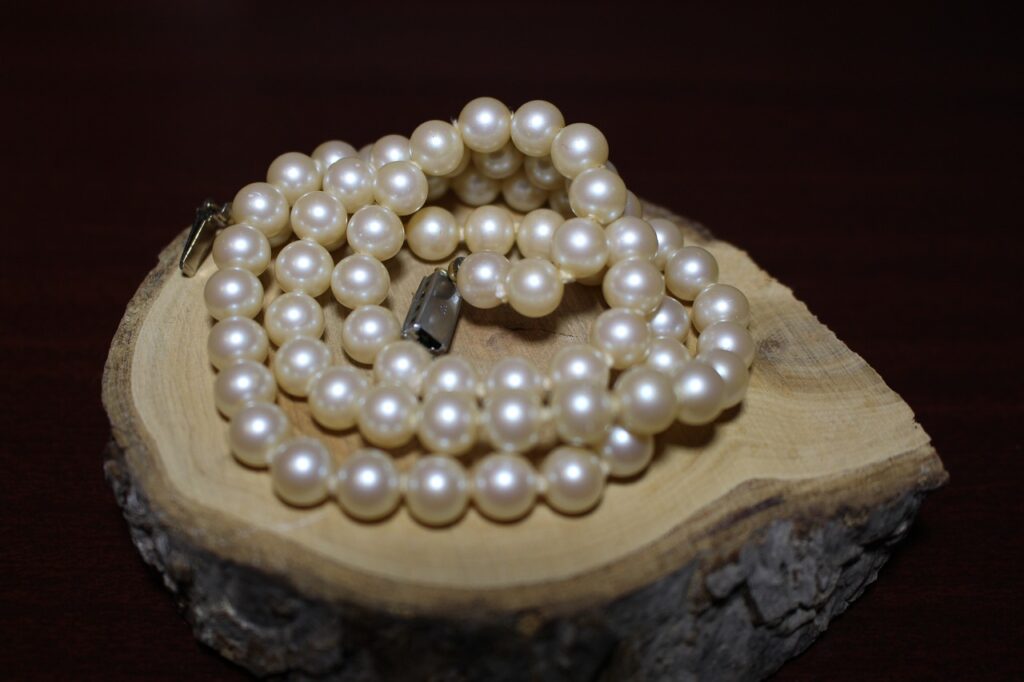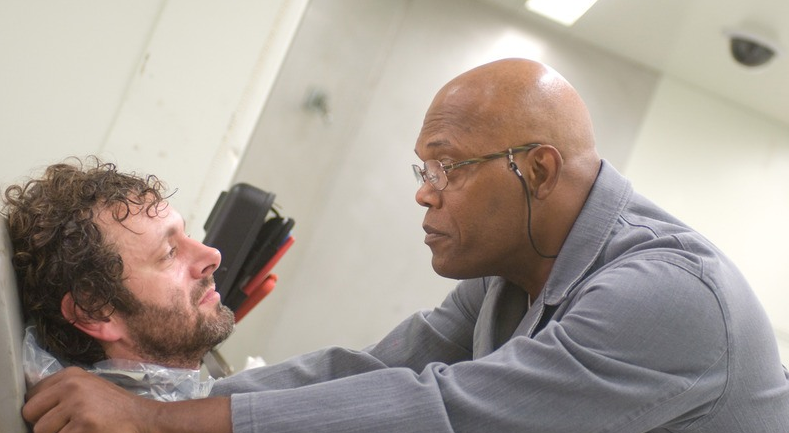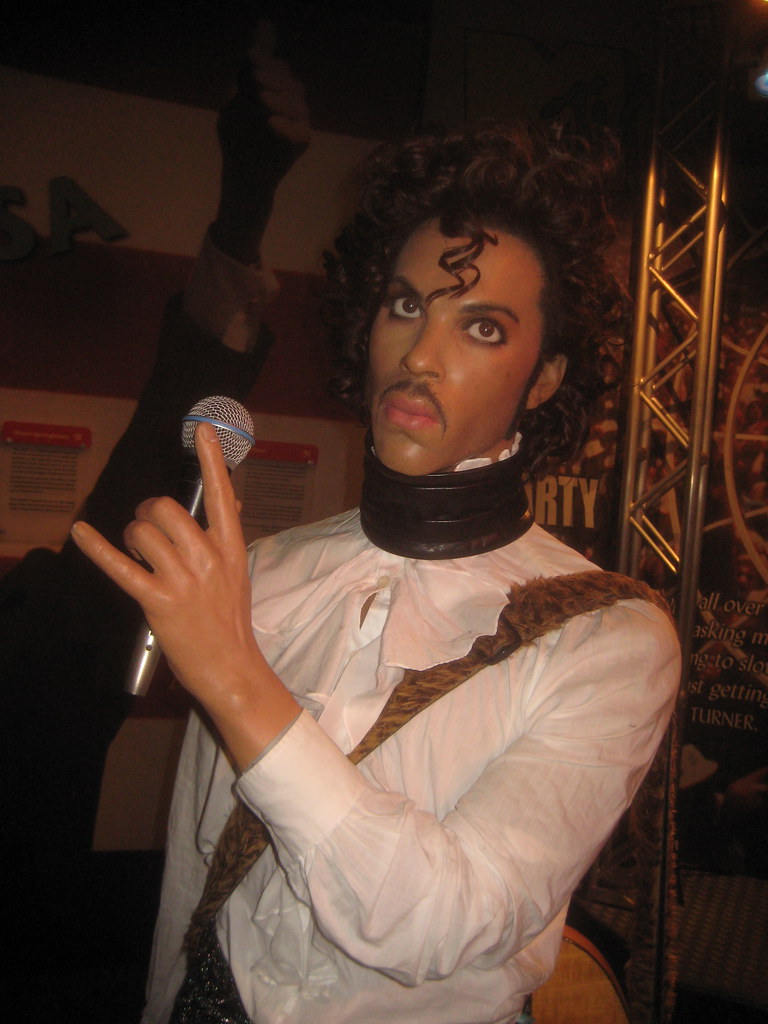
Prince Rogers Nelson, universally known as Prince, was a towering figure in American music, celebrated for his unparalleled artistry as a singer, songwriter, musician, and actor. Regarded by Billboard magazine as “the greatest musical talent of his generation,” his career spanned nearly four decades, marked by an extraordinary output of 39 albums during his lifetime and an estimated 500 to over 1,000 songs written. His distinctive persona, wide vocal range, multi-instrumental skill, and pioneering work in the “Minneapolis sound” left an indelible mark on popular culture, blending funk, disco, R&B, rock, and new wave with a daring originality that consistently pushed artistic boundaries.
This retrospective aims to meticulously chronicle the key milestones of Prince’s illustrious career, tracing his journey from his early life in Minneapolis to his emergence as a global music icon. Through a detailed examination of his breakthrough albums, revolutionary performances, and significant contributions to music and film, we will explore the multifaceted genius that defined his legacy. The narrative will highlight pivotal moments, creative shifts, and the enduring impact of an artist who continually defied categorization and embraced artistic independence.
Our exploration begins with his formative years, delving into the influences and circumstances that shaped his prodigious talent. We will then proceed chronologically, examining how his early record deals, the development of his unique sound, and his eventual global superstardom established him as one of the most influential and best-selling music artists of all time, with over 100 million records sold worldwide.

1. **Childhood and Early Musical Roots (June 7, 1958 – 1975)** Prince Rogers Nelson was born on June 7, 1958, in Minneapolis, Minnesota, to a family deeply embedded in music. His mother, Mattie Della, was a jazz singer, and his father, John Lewis Nelson, was a pianist and songwriter, who performed under the stage name Prince Rogers. It was from his father’s stage name that Prince derived his own, with his father reportedly wanting him ‘to do everything I wanted to do.’ This musical lineage would prove to be a profound influence on the young Prince.
Despite his given name, Prince preferred to be called ‘Skipper’ during his childhood, a nickname that remained with him. He also faced early health challenges, stating he was ‘born epileptic’ and experienced seizures, which he claimed ceased after a childhood angelic encounter. Both he and his younger sister, Tyka, born in 1960, developed a keen interest in music, a pursuit actively encouraged by their father, laying the groundwork for their future artistic endeavors.
Prince’s innate musical talent became evident at an early age; he wrote his first song, ‘Funk Machine,’ on his father’s piano at just seven years old. His parents’ divorce when he was ten led to a period of instability, with Prince frequently moving between his mother’s and father’s homes, and eventually residing with the Anderson family, neighbors whose son, Andre, would become a close friend and future collaborator, André Cymone. This early period of his life was marked by exposure to different environments and influences that would inform his eclectic musical style.
Beyond music, Prince was a well-rounded student, attending Minneapolis’s Bryant Junior High and Central High School, where he participated in football, basketball, and baseball, even playing on Central’s junior varsity basketball team. His artistic pursuits extended to classical ballet training at the Minnesota Dance Theatre, a foundation that later inspired his advocacy for dancers and his financial support for the Joffrey Ballet. It was during this time, in 1973, that he met songwriter and producer Jimmy Jam, who was reportedly impressed by Prince’s raw musical talent, multi-instrumental mastery, and unwavering work ethic.
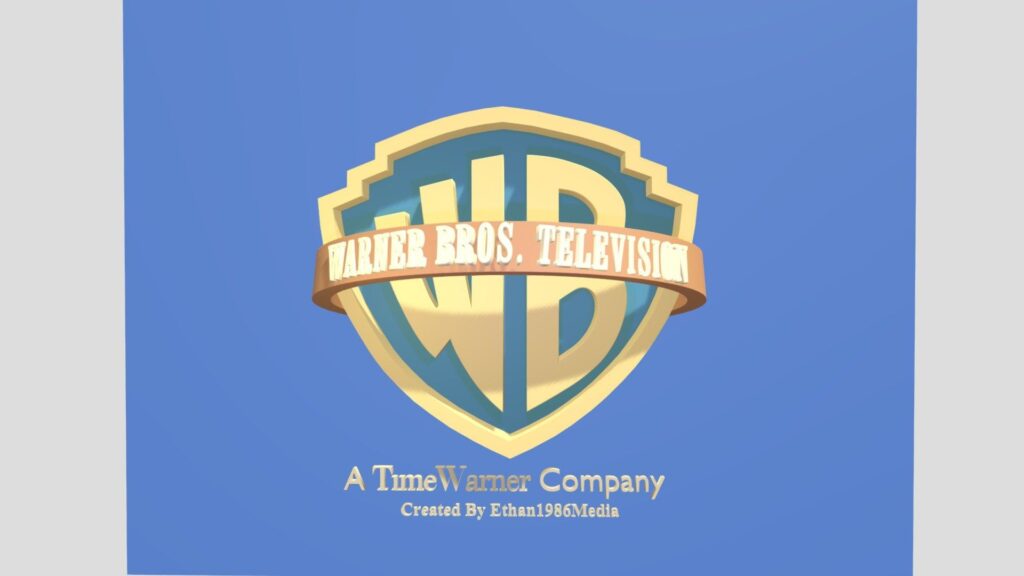
2. **Warner Bros. Debut and Early Success (1977–1979)** Prince’s professional journey began to take shape in 1975 when he contributed guitar tracks and co-wrote the song ‘Just Another Sucker’ for the band 94 East, formed by his cousin’s husband, Pepe Willie. This early recording experience, captured on the album *Minneapolis Genius – The Historic 1977 Recordings*, provided a crucial stepping stone. By 1976, shortly after graduating from Central High School, Prince created a demo tape with producer Chris Moon, a pivotal effort that, though initially failing to secure a contract, brought him to the attention of Minneapolis businessman Owen Husney.
Husney recognized Prince’s potential, signing him to a management contract at the age of 19 and facilitating the creation of a new demo at Sound 80 Studios. This professionally produced demo, combined with a comprehensive press kit, generated significant interest from major record labels including Warner Bros. Records, A&M Records, and Columbia Records. This competitive landscape ultimately led to Prince signing a landmark recording contract with Warner Bros. in 1977, a deal that famously granted him creative control over his first three albums and retained his publishing rights, a rare concession for a young artist.
Following the signing, Prince relocated from Minneapolis to Sausalito, California, to record his debut album, *For You*, at Record Plant Studios. Released on April 7, 1978, the album showcased Prince’s prodigious talent, with the album notes crediting him for writing, producing, arranging, composing, and playing all 27 instruments on the recording, except for ‘Soft and Wet,’ which included lyrics co-written by Moon. The ambitious project incurred recording costs that exceeded his initial advance, underscoring his early commitment to artistic autonomy.
*For You* yielded modest commercial success, with ‘Soft and Wet’ reaching No. 12 on the Hot Soul Singles chart and No. 92 on the Billboard Hot 100, while ‘Just as Long as We’re Together’ also charted on the Hot Soul Singles. Building on this foundation, Prince formed his first touring band in 1979, featuring André Cymone, Dez Dickerson, Gayle Chapman, Doctor Fink, and Bobby Z. Later that year, his self-titled second album, *Prince*, achieved greater commercial traction, reaching No. 4 on the Billboard Top R&B/Black Albums charts and going platinum, propelled by R&B hits like ‘Why You Wanna Treat Me So Bad?’ and ‘I Wanna Be Your Lover,’ the latter selling over a million copies and topping the Hot Soul Singles chart for two weeks.
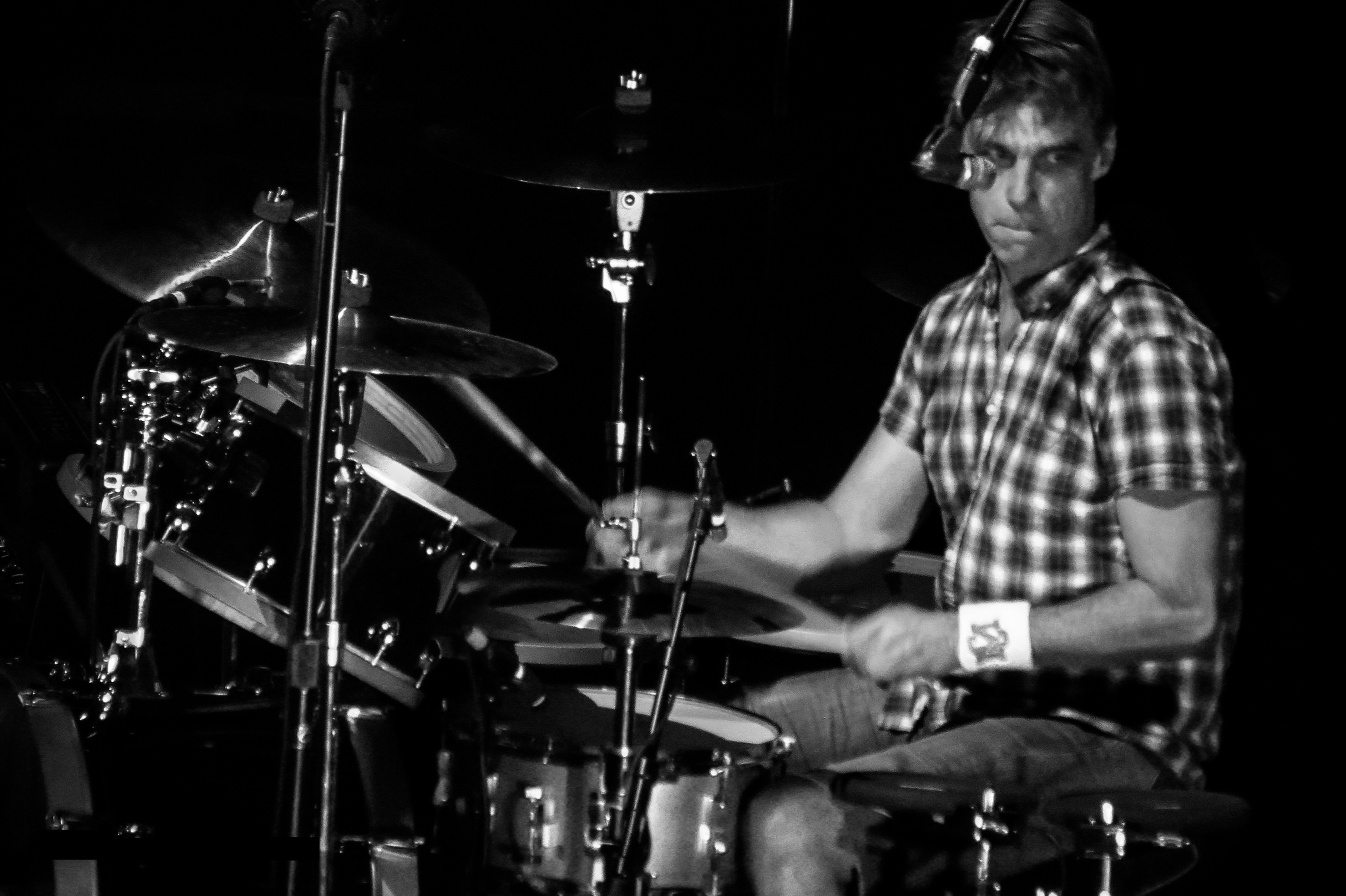
3. **Artistic Provocation: The ‘Dirty Mind’ and ‘Controversy’ Eras (1980–1981)** The dawn of the 1980s saw Prince embark on a period of increasingly bold artistic expression, notably with the release of his third album, *Dirty Mind*, in 1980. This album marked a significant departure, embracing sexually explicit lyrical content, exemplified by tracks such as the title song, ‘Head,’ and ‘Sister.’ Music critics, like Stephen Thomas Erlewine, described it as a ‘stunning, audacious amalgam of funk, new wave, R&B, and pop, fueled by grinningly salacious sex and the desire to shock,’ highlighting Prince’s willingness to challenge conventional norms and provoke his audience.
Recorded in Prince’s own studio, *Dirty Mind* was certified gold, and its single ‘Uptown’ achieved success on both the Billboard Dance chart and the Hot Soul Singles chart. This era also saw Prince gaining visibility through live performances, including a notable stint as the opening act for Rick James’ 1980 Fire It Up tour, exposing his burgeoning talent to a wider audience. His appearance on *American Bandstand* in January 1980, performing ‘Why You Wanna Treat Me So Bad?’ and ‘I Wanna Be Your Lover,’ further solidified his growing presence in the mainstream.
In February 1981, Prince made his inaugural appearance on *Saturday Night Live*, performing ‘Partyup,’ a testament to his increasing prominence in the entertainment industry. This was quickly followed by the release of the album *Controversy* in October 1981, which continued his exploration of socially and sexually charged themes. To support the album, Prince embarked on a series of tour dates, including a controversial stint as one of three opening acts for the Rolling Stones on their US tour.
These performances, particularly one in Los Angeles where he appeared in a trench coat and black bikini briefs, were met with hostility from some audience members, who reportedly threw trash at him, forcing him off stage after just three songs. Despite such challenging receptions, this period cemented Prince’s reputation as a daring and uncompromising artist. *Controversy* also introduced his distinctive use of abbreviated spelling, such as ‘U’ for ‘you’ and ‘2’ for ‘to,’ a stylistic quirk that would become a hallmark of his album titles, liner notes, and web postings for decades to come, further distinguishing his unique artistic identity.

4. **The ‘1999’ Breakthrough and MTV Integration (1982–1983)** The year 1982 marked a pivotal moment in Prince’s career with the release of the double album *1999*, a commercial and critical triumph that significantly broadened his appeal. This ambitious project sold over four million copies, solidifying his status as a major force in the music industry. The title track, a poignant protest against nuclear proliferation, transcended national boundaries to become Prince’s first top 10 hit in multiple countries outside the United States, demonstrating his growing international reach and thematic depth.
One of the album’s most significant achievements was the success of ‘Little Red Corvette.’ Its accompanying music video became one of the first two videos by black artists, alongside Michael Jackson’s ‘Billie Jean,’ to be played in heavy rotation on MTV. This was a groundbreaking development, as MTV had previously been perceived as resistant to featuring ‘black music.’ The shift was reportedly influenced by CBS President Walter Yetnikoff’s threat to withdraw all CBS videos, highlighting the commercial pressure that helped break racial barriers on the platform and usher in a new era of music video inclusivity.
The success of *1999* also fueled a competitive rivalry with Michael Jackson, a dynamic that would persist for many years. Another single from the album, ‘Delirious,’ further cemented Prince’s chart presence by also reaching the top ten on the Billboard Hot 100. The album’s track ‘International Lover’ earned Prince his first Grammy Award nomination at the 26th Annual Grammy Awards, a significant recognition that underscored his artistic legitimacy and growing influence within the music industry.
During this fertile period, Prince also embarked on a notable side project: the formation of the band The Time in 1981. Although Prince wrote and performed most of the instrumentation and backing vocals for their albums, often under pseudonyms like ‘Jamie Starr’ or ‘The Starr Company,’ lead vocals were provided by Morris Day. The Time released four albums between 1981 and 1990, showcasing Prince’s prolific creativity and his ability to cultivate and support other artists while maintaining a distinctive sound for each endeavor.
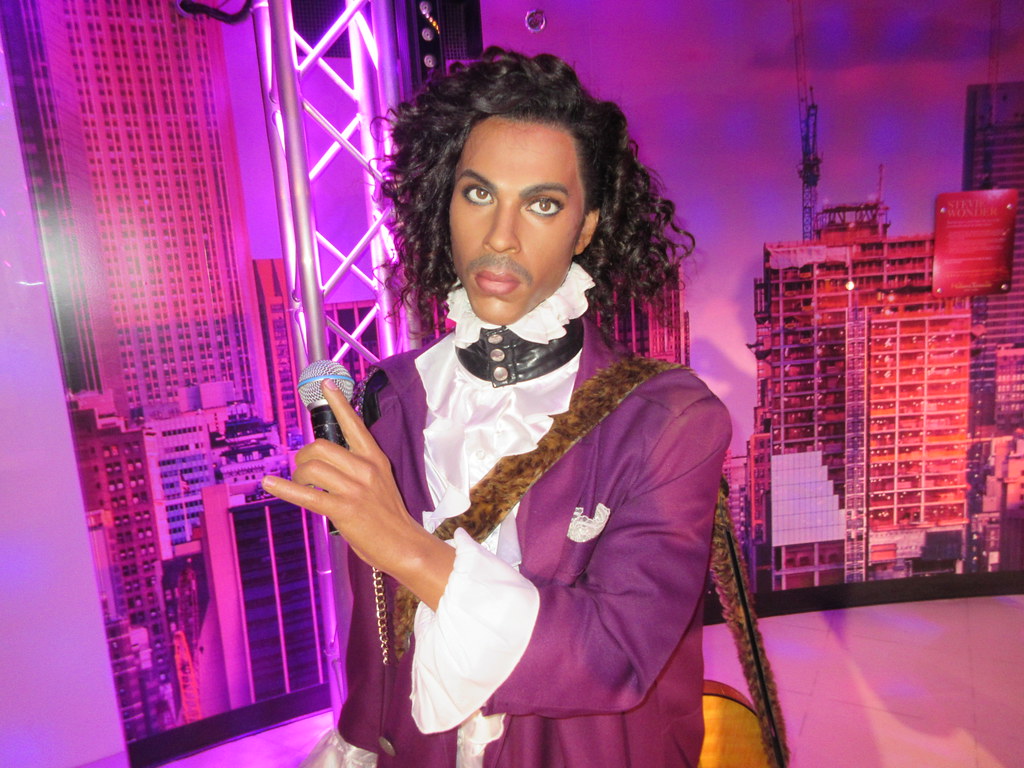
5. **The ‘Purple Rain’ Phenomenon and Global Stardom (1984)** The year 1984 catapulted Prince into global superstardom with the release of the semi-autobiographical film *Purple Rain* and its eponymous soundtrack album. According to his former manager Bob Cavallo, Prince had actively sought a major motion picture deal in the early 1980s, despite his relatively limited exposure at the time. This ambition culminated in a project that transcended mere musical success, becoming a cultural touchstone that dramatically expanded his audience and influence across the world.
The *Purple Rain* album itself was a monumental commercial success, selling over 13 million copies in the United States and dominating the Billboard 200 chart for an unprecedented 24 consecutive weeks at No. 1. Its impact was equally felt in the film industry, where it earned Prince an Academy Award for Best Original Song Score, a testament to the soundtrack’s integral role in the movie’s success. The film grossed more than $68 million in the US, equivalent to over $206 million in 2024 dollars, solidifying its place as a significant box-office hit.
The singles derived from the *Purple Rain* album became global chart-toppers. ‘When Doves Cry’ and ‘Let’s Go Crazy’ both reached No. 1 on the Billboard Hot 100, while the title track, ‘Purple Rain,’ peaked at No. 2. This period marked a historic achievement for Prince: in 1984, he simultaneously held the No. 1 album, single, and film in the US, an unprecedented feat for a singer. The album’s enduring legacy is reflected in its high ranking, 8th, on Rolling Stone’s ‘500 Greatest Albums of All Time’ list and its inclusion in Time magazine’s ‘All-Time 100 Albums.’
This era also saw the formal naming of his backing band as The Revolution, whose name was subtly printed in reverse on the cover of the *1999* album within the letter ‘I.’ The band, which included Lisa Coleman, Doctor Fink, Bobby Z., Brown Mark, and later Wendy Melvoin, played an increasingly significant role in Prince’s studio work after the *1999* Tour. The *Purple Rain* album brought Prince two of his first three Grammy Awards at the 27th Annual Grammy Awards, for Best Rock Performance by a Duo or Group with Vocal and Best Score Soundtrack for Visual Media, cementing his status as a critically acclaimed, genre-defying artist.
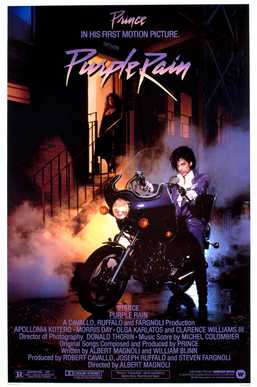
6. **Post-‘Purple Rain’ Evolution: ‘Around the World in a Day’ and ‘Parade’ (1985–1986)** Riding the immense wave of *Purple Rain*’s success, Prince continued to evolve his sound and artistic direction. In 1985, he made a notable announcement that he intended to discontinue live performances and music videos after his next album, signaling a desire for new creative avenues. His subsequent recording, *Around the World in a Day*, released that same year, demonstrated a stylistic shift, moving away from the more pop-oriented sound of *Purple Rain*. Despite this change, the album proved commercially successful, holding the No. 1 spot on the Billboard 200 for three consecutive weeks.
*Around the World in a Day* generated several hit singles, further proving Prince’s enduring appeal. ‘Raspberry Beret’ climbed to No. 2 on the Billboard Hot 100, becoming a memorable track from this period, while ‘Pop Life’ also achieved significant chart success, reaching No. 7. This album showcased Prince’s readiness to experiment and maintain artistic control, even after achieving mainstream dominance, reinforcing his reputation as an artist who refused to be confined by commercial expectations or a single genre.
The year 1986 saw the release of *Parade*, which served as the soundtrack for Prince’s second film, *Under the Cherry Moon*. The album performed strongly, reaching No. 3 on the Billboard 200 and No. 2 on the R&B charts. Its lead single, ‘Kiss,’ featuring a video choreographed by Louis Falco, became a massive hit, soaring to No. 1 on the Billboard Hot 100. This song, initially written for a side project band called Mazarati, exemplified Prince’s prolific songwriting and his ability to craft infectious, genre-blending tracks that resonated with a broad audience.
While the *Parade* album achieved platinum status and sold two million copies, the accompanying film *Under the Cherry Moon* received a much less favorable reception. Directed by and starring Prince, the movie, which also featured Kristin Scott Thomas, was awarded a Golden Raspberry Award for Worst Picture, tied with *Howard the Duck*. Prince himself received Golden Raspberry Awards for Worst Director, Worst Actor, and Worst Original Song for ‘Love or Money.’ However, in the years following his death, some critics re-evaluated *Under the Cherry Moon*, declaring it a cult classic and drawing comparisons to films like *8½*, *Casablanca*, and *It Happened One Night*, highlighting a posthumous reappraisal of its artistic merit.

7. **Critical Apex: ‘Sign o’ the Times’ and The Revolution’s Dissolution (1987)** Before the official dissolution of The Revolution, Prince was simultaneously developing two distinct projects: the band-oriented *Dream Factory* album and a solo endeavor titled *Camille*. *Dream Factory* was notable for incorporating more input from band members and featured lead vocals by Wendy & Lisa, a departure from Prince’s usual solo dominance. The *Camille* project, on the other hand, saw Prince experimenting with a new, androgynous persona, primarily utilizing a sped-up, female-sounding voice, showcasing his continuous drive for vocal and stylistic innovation.
With the decision to disband The Revolution following the ‘Hit n Run – Parade Tour,’ Prince consolidated material from both *Dream Factory* and *Camille*, alongside new compositions, into an ambitious three-LP album he intended to call *Crystal Ball*. However, Warner Bros. Records intervened, compelling Prince to trim the extensive collection down to a double album. This revised project, ultimately titled *Sign o’ the Times*, was released on March 31, 1987, and is widely hailed by critics as the greatest work of his career, a sprawling masterpiece reflecting his unparalleled creative peak.
The album debuted strongly, peaking at No. 6 on the Billboard 200 albums chart, underscoring its significant commercial appeal. Its singles were equally impactful; the titular track, ‘Sign o’ the Times,’ charted at No. 3 on the Hot 100, delivering a powerful socio-political commentary. ‘If I Was Your Girlfriend,’ a more experimental track, reached No. 67 on the Hot 100 but performed better on the R&B chart at No. 12. The duet with Sheena Easton, ‘U Got the Look,’ became a major hit, peaking at No. 2 on the Hot 100 and No. 11 on the R&B chart, while ‘I Could Never Take the Place of Your Man’ finished strong at No. 10 on the Hot 100 and No. 14 on the R&B chart.
*Sign o’ the Times* was not only a commercial success but also garnered immense critical acclaim, being named the top album of the year by the prestigious Pazz & Jop critics’ poll and selling 3.2 million copies. To promote the album internationally, Prince assembled a new backing band, incorporating remnants of The Revolution alongside new talents like bassist Levi Seacer Jr., keyboardist Boni Boyer, dancer/choreographer Cat Glover, and drummer Sheila E. This extensive ‘Sign o’ the Times Tour’ was highly successful overseas, solidifying Prince’s global artistic standing despite the dissolution of his most famous backing group. The final two nights of the tour were filmed for a cinematic release, a compromise after Prince resisted a full US tour, demonstrating his shift towards new creative ventures rather than extensive touring.

8. **The ‘Black Album’ and ‘Lovesexy’ (1987–1988)**Following the critical triumph of ‘Sign o’ the Times’, Prince continued his prolific output, initially developing an album known as ‘The Black Album’. This project marked a distinct stylistic turn, focusing on more instrumental, funk, and R&B-themed compositions. It also saw Prince exploring hip hop, particularly on tracks such as “Bob George” and “Dead on It,” demonstrating his willingness to expand his musical palette beyond established genres.
However, after approximately 500,000 copies had been pressed, Prince took the unprecedented step of recalling the album. This decision was reportedly driven by a profound spiritual epiphany, during which he deemed the album “evil.” This extraordinary move underscored his deep commitment to his evolving spiritual beliefs and artistic integrity, even in the face of significant commercial implications.
In a direct artistic response to ‘The Black Album’, Prince swiftly returned to the studio and, within an intensive eight-week period, recorded ‘Lovesexy’. Released on May 10, 1988, this album served as a spiritual antithesis, reflecting a more positive and uplifting lyrical and musical direction. Every song on ‘Lovesexy’ was a solo effort by Prince, with the exception of “Eye No,” which featured his then-backing band.
‘Lovesexy’ achieved a respectable No. 11 position on the Billboard 200 and climbed to No. 5 on the R&B albums chart. Its lead single, “Alphabet St.,” further cemented its success, peaking at No. 8 on the Hot 100 and No. 3 on the R&B chart. The album was supported by the ‘Lovesexy World Tour’, an ambitious 84-show undertaking that, despite positive audience reception, did not yield a net profit due to its elaborate and costly sets and props.
9. **Hollywood Revisited: ‘Batman’ Soundtrack (1989)**In 1989, Prince engaged with the cinematic world once more, following a request from director Tim Burton to record several songs for his live-action adaptation of ‘Batman’. This opportunity redirected Prince’s creative energies away from his ongoing projects, including ‘Rave Unto the Joy Fantastic’ and early drafts of his ‘Graffiti Bridge’ film, highlighting the significant draw of major Hollywood collaborations.
Prince’s response was prolific; he entered the studio and produced an entire nine-track album for the film. Released by Warner Bros. on June 20, 1989, the ‘Batman’ soundtrack proved to be a monumental commercial success. It soared to No. 1 on the Billboard 200, selling an impressive 4.3 million copies, thereby playing a crucial role in the film’s broader cultural impact.
The album generated several hit singles. “Batdance” topped both the Billboard Hot 100 and R&B charts, becoming an instantly recognizable track. “The Arms of Orion,” a duet with Sheena Easton, charted at No. 36, while “Partyman,” featuring the vocals of Prince’s then-girlfriend Anna Fantastic, reached No. 18 on the Hot 100 and No. 5 on the R&B chart. The ballad “Scandalous!” also achieved success, peaking at No. 5 on the R&B chart.
A notable contractual aspect of this project required Prince to sign away all publishing rights to the songs on the ‘Batman’ album to Warner Bros. This detail illuminated the complex commercial negotiations often inherent in major Hollywood productions and contributed to Prince’s evolving perspective on artistic control and ownership.

10. **’Graffiti Bridge’ and the Nude Tour (1990)**Following the ‘Batman’ success, Prince embarked on the ‘Nude Tour’ in 1990, adopting a back-to-basics approach to live performance. For this tour, he introduced a revamped band, incorporating new talents such as keyboardist Rosie Gaines and drummer Michael Bland, alongside the dancing trio the Game Boyz. This configuration signaled a departure from previous lineups, emphasizing a more direct stage presence, and the European and Japanese legs of the tour achieved significant financial success.
As the year progressed, Prince returned to his filmmaking ambitions, completing production on his fourth film, ‘Graffiti Bridge’, also released in 1990. Initially, Warner Bros. had been hesitant to finance the project. However, Prince’s assurances that it would serve as a spiritual sequel to ‘Purple Rain’, coupled with the involvement of original members of The Time, convinced the studio to proceed with the film.
The accompanying ‘Graffiti Bridge’ album, released on August 20, 1990, performed respectably, reaching No. 6 on both the Billboard 200 and R&B albums charts. It featured the hit single “Thieves in the Temple,” which climbed to No. 6 on the Hot 100 and topped the R&B chart. Another notable track, “Round and Round,” featured the teenage Tevin Campbell on lead vocals and achieved significant chart success.
However, the film itself, released on November 20, 1990, did not replicate the success of ‘Purple Rain’. It proved to be a box-office flop, grossing $4.2 million, and was largely met with critical disinterest. In the aftermath of the film and album’s release, the last remaining members of the Revolution, Miko Weaver and Doctor Fink, departed Prince’s band, concluding an era of his musical collaborations.
Read more about: Prince Rogers Nelson: A Singular Force in Music – Exploring the Life and Enduring Legacy of an Icon
11. **The New Power Generation and ‘Diamonds and Pearls’ (1991)**The year 1991 marked a significant turning point with the formal debut of Prince’s new backing band, the New Power Generation (NPG). This ensemble brought fresh energy and a distinct sound, with key new members including bass player Sonny T., Tommy Barbarella on keyboards, and a dynamic brass section known as the Hornheads. They joined existing collaborators, forming a formidable new musical unit that provided a solid foundation for Prince’s evolving artistic vision.
With substantial input from these new band members, the album ‘Diamonds and Pearls’ was released on October 1, 1991. The album quickly achieved commercial success, reaching No. 3 on the Billboard 200 album chart. Its collaborative nature, featuring a more prominent role for the New Power Generation, resonated with audiences and critics, demonstrating Prince’s ability to reinvent his sound while maintaining his unique musical identity.
‘Diamonds and Pearls’ produced four hit singles in the United States, showcasing its broad appeal. “Gett Off” peaked at No. 21 on the Hot 100 and No. 6 on the R&B charts, establishing an early success. This was followed by “Cream,” which became Prince’s fifth US No. 1 single. The title track, “Diamonds and Pearls,” became the album’s third single, reaching No. 3 on the Hot 100 and securing the top spot on the R&B charts.
The final single, “Money Don’t Matter 2 Night,” also performed well, peaking at No. 23 and No. 14 on the Hot 100 and R&B charts, respectively. Overall, ‘Diamonds and Pearls’ was a major success, selling over 2 million copies in the United States alone. It underscored the vitality of the New Power Generation and Prince’s enduring ability to craft commercially successful and critically acclaimed music.
Read more about: Prince Rogers Nelson: A Singular Force in Music – Exploring the Life and Enduring Legacy of an Icon

12. **The ‘Love Symbol’ Era and Contractual Disputes (1992–1993)**Following the commercial triumph of ‘Diamonds and Pearls’, Prince renewed his contract with Warner Bros. in 1992, reportedly securing a substantial $100 million deal for the release of six more albums. This agreement, while significant, foreshadowed escalating tensions over creative control and release schedules that would soon define this period of his career.
In November of the same year, Prince released his 14th studio album, which bore only an unpronounceable symbol on its cover as its title. This symbol, later copyrighted as “Love Symbol #2,” was explained as a fusion of the traditional male and female symbols, reflecting Prince’s ongoing exploration of identity. The album, subsequently referred to as ‘Love Symbol’, was preceded by the singles “Sexy MF” and “My Name Is Prince,” with a third single, “7,” peaking at No. 7.
Despite reaching No. 5 on the Billboard 200 and selling 2.8 million copies worldwide, the ‘Love Symbol’ album fell short of the lofty commercial expectations set by his previous successes. This period marked the beginning of open rebellion against Warner Bros., primarily due to the label’s refusal to release Prince’s immense backlog of music at a pace he deemed appropriate, leading to growing disputes over his prolific output.
In 1993, as a direct act of protest and a reclamation of artistic autonomy, Prince formally adopted the “Love Symbol” as his stage name. This unprecedented move necessitated Warner Bros. organizing a mass mailing of floppy disks containing a custom font to enable print media to reproduce his new name. During this time, he was frequently referred to as “The Artist Formerly Known as Prince” or simply “The Artist.” That same year, Warner Bros. released the comprehensive greatest hits compilation, ‘The Hits/The B-Sides’, featuring hit singles, B-sides, and previously unreleased tracks.

13. **Independent Spirit: ‘The Most Beautiful Girl in the World’ and ‘Emancipation’ (1994–1996)**The mid-1990s saw Prince intensifying his battle for creative and contractual freedom, characterized by a determined shift towards independent distribution and a prolific release strategy. In a notable departure from major label releases, Warner Bros. permitted the single “The Most Beautiful Girl in the World” to be released in February 1994 through a small, independent distributor, Bellmark Records. This release proved to be a global success, reaching No. 3 on the US Billboard Hot 100 and topping the charts in numerous other countries.
Driven by a desire to liberate himself from his contractual obligations to Warner Bros., Prince began releasing albums in rapid succession. This period included the limited official release of the previously aborted ‘Black Album’ seven years after its initial recording. He also pushed for the simultaneous release of ‘Come’ and ‘The Gold Experience’, but Warner Bros. delayed the latter, fearing market saturation. In a powerful visual protest, Prince began making public appearances with the word “slave” written on his face, symbolizing his fight for artistic liberation.
‘The Gold Experience’ was eventually released in September 1995, but its availability was hindered for an extended period due to a plagiarism case related to “The Most Beautiful Girl in the World.” However, the album later saw a resurgence with its inclusion on streaming platforms in 2018 and subsequent reissues on CD and vinyl in 2022. In 1996, the album ‘Chaos and Disorder’ was released, followed by ‘The Vault: Old Friends 4 Sale’, which Prince submitted to Warner Bros. that same year, officially fulfilling his contract and securing his release from the label.
Freed from his long-standing contractual obligations, Prince launched a major comeback later in 1996 with ‘Emancipation’, a sprawling 36-song, three-CD set. Released via his own NPG Records with distribution through EMI, this album marked a new era of independent control. For ‘Emancipation’, Prince shifted from using Controversy Music – ASCAP to Emancipated Music Inc. – ASCAP for publishing his songs, a symbolic gesture of his newfound autonomy. The album was certified Platinum by the RIAA and featured his first-ever covers of other artists’ songs, including Joan Osborne’s “One of Us.”

14. **Post-Warner Bros. Output: ‘Crystal Ball’ to ‘Rave Un2 the Joy Fantastic’ (1998–1999)**In the wake of his contractual freedom, Prince continued to explore various avenues for releasing his extensive body of work and new material. In 1998, he offered ‘Crystal Ball’, an ambitious five-CD collection of previously unreleased material, directly to fans. However, the distribution of this album was notably disorderly, with many fans experiencing significant delays in receiving their pre-ordered copies, long after the record had become available in retail stores. The retail edition comprised only four discs, notably missing the ‘Kamasutra’ disc.
Following ‘Crystal Ball’, Prince released ‘Newpower Soul’ three months later, maintaining a consistent output of new music. This period also saw him actively collaborating with other artists signed to his NPG label, including Chaka Khan’s ‘Come 2 My House’ and Larry Graham’s ‘GCS2000’. These collaborations were strategically promoted through live appearances on television shows such as ‘Vibe with Sinbad’ and the ‘NBC Today’ show’s Summer Concert Series.
By 1999, Prince made the decision to once again partner with a major label, signing with Arista Records for the release of his new album, ‘Rave Un2 the Joy Fantastic’. This move indicated a pragmatic shift in his approach to broader distribution while still aiming to maintain the creative independence he had fought so hard to secure. The album represented a significant re-engagement with mainstream label structures after a period of intense independent activity.
To coincide with the new millennium, Prince broadcast the pay-per-view concert ‘Rave Un2 the Year 2000’ on December 31, 1999. This event comprised footage from two concerts of his 1999 tour and featured guest musicians including Lenny Kravitz, George Clinton, Jimmy Russell, and The Time. The concert was subsequently released to home video the following year, serving as a vibrant culmination of his late-1990s output.
15. **The New Millennium and Critical Resurgence: ‘Musicology’ and ‘3121’ (2000–2007)**The dawn of the new millennium brought another significant shift for Prince. On May 16, 2000, he officially ceased using the Love Symbol as his stage name, coinciding with the expiration of his publishing contract with Warner/Chappell. In a press conference, he announced his return to using his birth name, Prince, citing his liberation from “undesirable relationships” associated with the symbol era.
For several years, Prince innovatively released new music primarily through his Internet subscription service, initially NPGOnlineLtd.com and later NPGMusicClub.com. This direct-to-fan model bypassed traditional retail channels, offering albums such as ‘Rave In2 the Joy Fantastic’ (2001), ‘The Rainbow Children’ (2001), ‘One Nite Alone…’ (2002), and several others. This period exemplified his pioneering spirit in digital distribution and fan engagement, further showcasing his independent ethos.
In 2001, Warner Bros. released ‘The Very Best of Prince’, a second compilation album featuring most of his commercially successful singles from the 1980s, highlighting the enduring legacy of his early career. Prince continued to engage deeply with his fanbase, organizing pre-concert sound checks and yearly “celebrations” at his Paisley Park studios. In 2002, he released his first live album, ‘One Nite Alone… Live!’, a three-CD box set capturing performances from the ‘One Nite Alone…Tour’.
A pivotal moment occurred on February 8, 2004, when Prince performed a dynamic medley with Beyoncé at the 46th Annual Grammy Awards, electrifying the audience with hits like “Purple Rain” and “Crazy in Love.” The following month, he was inducted into the Rock and Roll Hall of Fame by Alicia Keys, Big Boi, and André 3000. During the ceremony, in addition to performing his own hits, Prince delivered an iconic two-minute guitar solo during a tribute to George Harrison’s “While My Guitar Gently Weeps,” cementing his status as a legendary musician.
In April 2004, Prince released ‘Musicology’ through a one-album agreement with Columbia, marking his return to major label distribution. The album achieved significant international chart success, reaching the top five in the US, UK, Germany, and Australia. Its US chart performance was notably bolstered by the inclusion of CDs with concert ticket purchases, an innovative strategy that qualified each CD towards chart placement. This era saw a significant critical and commercial resurgence for Prince; ‘Spin’ magazine named him the greatest frontman of all time, and ‘Rolling Stone’ recognized him as the highest-earning musician in the world, largely due to his ‘Musicology Tour’. The album garnered two Grammy wins for Best Male R&B Vocal Performance and Best Traditional R&B Vocal Performance.
His continued vitality was evident in April 2005, when he contributed guitar to Stevie Wonder’s single “So What the Fuss.” Later that year, Prince signed with Universal Music to release ‘3121’ on March 21, 2006. The album’s lead single, “Te Amo Corazón,” featured a video directed by Salma Hayek. ‘3121’ achieved immediate success, becoming Prince’s first No. 1 album on the US Billboard 200 since ‘Purple Rain’. This period underscored his enduring creative power and ability to consistently produce chart-topping and critically lauded work, marking a profound commercial resurgence in the new millennium.
Prince’s journey, from a prodigy in Minneapolis to a global icon, showcases an unparalleled artistic evolution. His career, marked by audacious creativity, relentless pursuit of independence, and a chameleon-like ability to fuse genres, continuously pushed the boundaries of music and performance. From his early breakthroughs to his critical apex and later resurgence, Prince remained a singular force, leaving an indelible mark on popular culture and an enduring legacy that continues to inspire. His profound influence, innovative spirit, and unwavering commitment to his unique artistic vision ensure his place as one of the most revered and impactful musicians of all time.

